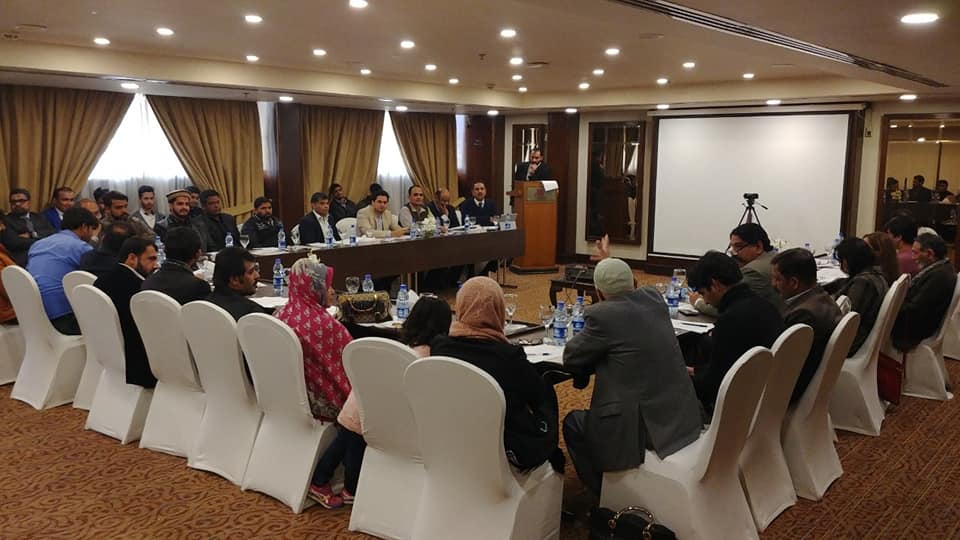Islamabad: 10 January, 2019: In a move to minimize the hazardous affects of Tobaccoo consumption in the country, a media conference on Tobacco tax Reforms was organised by Society for the Protection of the Rights of the Child (SPARC), Human Development Foundation (HDF) and Pakistan National Heart Association here on Thursday in Islamabad. The conference was followed by an interactive question answer session that revealed many alarming facts about Tobacco industry’s motives to attract new generation towards smoking.
Addressing to participants Malik Imran Ahmad from Campaign for Tobacco Free Kids, Pakistan office, shared a new model on Tobacco tax reforms.
Malik Imran Ahmad said that the tax reform model will also contribute to significant reduction in adult cigarette consumption by almost 42% (about 28 billion sticks); reduced smoking prevalence by about 2.15 p.p., from 10.4% of all adults currently to about 8.3% of adults after 3 years, and reduction in the number of smoking-related deaths among current and future smokers by about 11% which is a reduction of about 1.1 million.
The experts on tobacco taxation have come up with a concrete proposal for tobacco tax reforms and recommend solutions to the federal government on short term (Fiscal Years 2019/20), medium term (FY 2020/21) and long term basis (FY 2021/22). According to the calculations it is predicted that the tax reform would generate significant additional total tax revenue of about PKR 205.9 billion over 3 year, equivalent to an average annual increase in total tax revenue of about 51% (or about PKR 32.3 billion per year). The experts also anticipate an increase in the excise tax share in the price from about 45.9% currently to 57.6%, somewhat closer to the 70% level recommended by the World Health Organization.
Participants expressed confidence that recommendation for tobacco tax reform, if adopted by the government will prove to be an effective policy that will simplify Pakistan’s tobacco tax system, thus reduce government’s administrative costs (improve enforcement and compliance) and further align it with best global practices. Furthermore, the ring-fence structure is proposed so that the health sector of the country can be improved. The proposal can significantly reduce tobacco use and save lives while raising significant additional tax revenue that can fund government health programs, including tobacco control programs, a “win-win” for tobacco control.
Participants demanded the government to implement crucial measures to further strengthen the tax system: Regularly increase the excise tax to account for inflation and income growth and reduce cigarette affordability; harmonize all taxes across tobacco products; and fully implement the Protocol to Eliminate Illicit Tobacco Trade, particularly the measures for supply chain control, such as license, tracking and tracing and record keeping, and align the Protocol with the legislation on prosecutions and sanctions for tax evasion.








